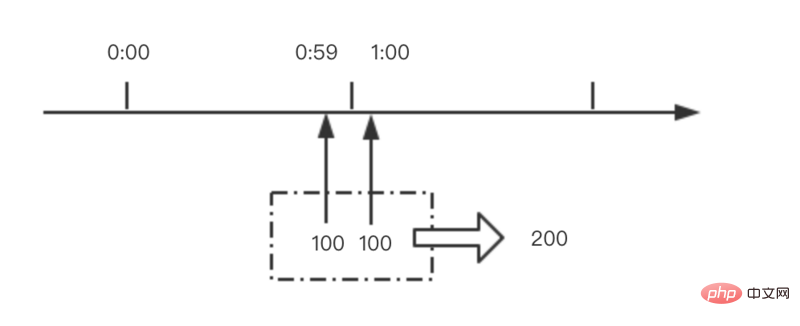How to use Nginx to implement request method-based access control
Nginx is an open source software that is very suitable as a reverse proxy server and load balancer. It can serve as a file server for static services or handle dynamic requests, and it also supports a variety of configuration options to achieve access control for specific needs.
This article will introduce how to use Nginx to implement access control based on request methods. We will use Nginx’s official module ngx_http_access_module to restrict access to HTTP methods.
First, make sure Nginx is installed and running with the default configuration. Next, we need to modify the Nginx configuration file, usually located at /etc/nginx/nginx.conf. Find the http section and add the following code in it:
http {
...
server {
...
location / {
# 允许GET和HEAD方法的请求
if ($request_method !~ ^(GET|HEAD)$ ) {
return 405;
}
# 处理其他请求
...
}
...
}
...
}In the above code, we have made exceptions for GET and HEAD methods and allowed these requests to pass. For other methods (such as POST, PUT, DELETE, etc.), we use the if statement to return an HTTP status code 405, indicating that the method is not allowed.
Through the above configuration, we have implemented access control based on the request method. However, it should be noted that Nginx's if statement is not applicable in all situations, because it can only be used in a specific context and can only be used as a last line of defense to control access.
If we want to more finely control the access permissions of the request method, we can use the rewrite module of Nginx for processing. The following is a code example:
http {
...
server {
...
location / {
# 处理POST方法的请求
if ($request_method = POST ) {
# 返回自定义的HTTP状态码493
return 493;
}
# 处理其他请求
...
}
...
}
...
}In the above code, we use the if statement to determine whether the request method is POST. If so, use the return statement to return a custom HTTP status code 493. In this way, we can customize the logic for handling different request methods based on specific needs.
In addition to using the ngx_http_access_module and rewrite modules, Nginx also provides many other modules and functions that can help us implement more complex and flexible access control strategies. For example, we can use the ngx_http_auth_basic_module module to implement basic HTTP authentication, or use the ngx_http_limit_req_module module to implement request frequency limiting.
To summarize, through Nginx configuration, we can implement access control based on request methods. This article provides the above two common methods and gives corresponding code examples. Readers can further configure and expand according to actual needs to improve the flexibility and precision of access control while ensuring system security.
The above is the detailed content of How to use Nginx to implement request method-based access control. For more information, please follow other related articles on the PHP Chinese website!
 内存飙升!记一次nginx拦截爬虫Mar 30, 2023 pm 04:35 PM
内存飙升!记一次nginx拦截爬虫Mar 30, 2023 pm 04:35 PM本篇文章给大家带来了关于nginx的相关知识,其中主要介绍了nginx拦截爬虫相关的,感兴趣的朋友下面一起来看一下吧,希望对大家有帮助。
 nginx限流模块源码分析May 11, 2023 pm 06:16 PM
nginx限流模块源码分析May 11, 2023 pm 06:16 PM高并发系统有三把利器:缓存、降级和限流;限流的目的是通过对并发访问/请求进行限速来保护系统,一旦达到限制速率则可以拒绝服务(定向到错误页)、排队等待(秒杀)、降级(返回兜底数据或默认数据);高并发系统常见的限流有:限制总并发数(数据库连接池)、限制瞬时并发数(如nginx的limit_conn模块,用来限制瞬时并发连接数)、限制时间窗口内的平均速率(nginx的limit_req模块,用来限制每秒的平均速率);另外还可以根据网络连接数、网络流量、cpu或内存负载等来限流。1.限流算法最简单粗暴的
 nginx+rsync+inotify怎么配置实现负载均衡May 11, 2023 pm 03:37 PM
nginx+rsync+inotify怎么配置实现负载均衡May 11, 2023 pm 03:37 PM实验环境前端nginx:ip192.168.6.242,对后端的wordpress网站做反向代理实现复杂均衡后端nginx:ip192.168.6.36,192.168.6.205都部署wordpress,并使用相同的数据库1、在后端的两个wordpress上配置rsync+inotify,两服务器都开启rsync服务,并且通过inotify分别向对方同步数据下面配置192.168.6.205这台服务器vim/etc/rsyncd.confuid=nginxgid=nginxport=873ho
 nginx php403错误怎么解决Nov 23, 2022 am 09:59 AM
nginx php403错误怎么解决Nov 23, 2022 am 09:59 AMnginx php403错误的解决办法:1、修改文件权限或开启selinux;2、修改php-fpm.conf,加入需要的文件扩展名;3、修改php.ini内容为“cgi.fix_pathinfo = 0”;4、重启php-fpm即可。
 如何解决跨域?常见解决方案浅析Apr 25, 2023 pm 07:57 PM
如何解决跨域?常见解决方案浅析Apr 25, 2023 pm 07:57 PM跨域是开发中经常会遇到的一个场景,也是面试中经常会讨论的一个问题。掌握常见的跨域解决方案及其背后的原理,不仅可以提高我们的开发效率,还能在面试中表现的更加
 nginx部署react刷新404怎么办Jan 03, 2023 pm 01:41 PM
nginx部署react刷新404怎么办Jan 03, 2023 pm 01:41 PMnginx部署react刷新404的解决办法:1、修改Nginx配置为“server {listen 80;server_name https://www.xxx.com;location / {root xxx;index index.html index.htm;...}”;2、刷新路由,按当前路径去nginx加载页面即可。
 nginx怎么禁止访问phpNov 22, 2022 am 09:52 AM
nginx怎么禁止访问phpNov 22, 2022 am 09:52 AMnginx禁止访问php的方法:1、配置nginx,禁止解析指定目录下的指定程序;2、将“location ~^/images/.*\.(php|php5|sh|pl|py)${deny all...}”语句放置在server标签内即可。
 Linux系统下如何为Nginx安装多版本PHPMay 11, 2023 pm 07:34 PM
Linux系统下如何为Nginx安装多版本PHPMay 11, 2023 pm 07:34 PMlinux版本:64位centos6.4nginx版本:nginx1.8.0php版本:php5.5.28&php5.4.44注意假如php5.5是主版本已经安装在/usr/local/php目录下,那么再安装其他版本的php再指定不同安装目录即可。安装php#wgethttp://cn2.php.net/get/php-5.4.44.tar.gz/from/this/mirror#tarzxvfphp-5.4.44.tar.gz#cdphp-5.4.44#./configure--pr


Hot AI Tools

Undresser.AI Undress
AI-powered app for creating realistic nude photos

AI Clothes Remover
Online AI tool for removing clothes from photos.

Undress AI Tool
Undress images for free

Clothoff.io
AI clothes remover

AI Hentai Generator
Generate AI Hentai for free.

Hot Article

Hot Tools

VSCode Windows 64-bit Download
A free and powerful IDE editor launched by Microsoft

SublimeText3 Linux new version
SublimeText3 Linux latest version

Notepad++7.3.1
Easy-to-use and free code editor

EditPlus Chinese cracked version
Small size, syntax highlighting, does not support code prompt function

Zend Studio 13.0.1
Powerful PHP integrated development environment






